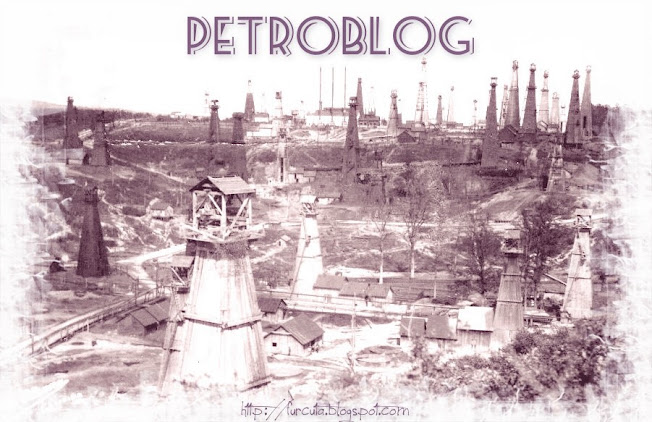Oilmen at Colombia S.A. from Moreni, Septembrie 1927
The War, the Oil and the Football..
A football match
between a German team from Rifle Regiment No. 11, Tank Division No. 9 and the Ploiesti Concordia Refinery team.
Moreni, 1941.
JG 52 machines in flight over the Ploiesti oilfields.
JG 52 machines in flight over the Ploiesti oilfields, 1941.
Photo Colorization Before and After
Jagdgeschwader 52 (JG 52) was a German fighter-wing that exclusively used the Messerschmitt Bf 109 throughout the war. The unit originally formed near Munich in November 1938, then moved to a base near Stuttgart. JG 52 became the most successful fighter-wing of all time, with a claimed total of more than 10,000 victories over enemy aircraft during World War II. It was the unit of the top three scoring flying aces of all time, Erich Hartmann, Gerhard Barchorn and Gunter Rall.
Bazna gas industry
Bazna gas industry. Sibiu, 1911.
Workers at Bazna gaz field.
Crater at well no 3 Bazna after eruption in 1914. During drilling well no 3 Bazna under command of H. Bockh, a big eruption occured that led to the sinking of the drilling rig. A big salty lake was formed.
The Bazna gas field is a natural gas field located in Bazna,Sibiu County. It was discovered in 1912 and developed by and Romgaz. It began production in 1915 and produces natural gas and condensates. The total proven reserves of the Bazna gas field are around 1.06 trillion cubic feet (30 km³), and production is slated to be around 23.8 million cubic feet/day (0.67×105m³) in 2010.
Workers at Bazna gaz field.
Crater at well no 3 Bazna after eruption in 1914. During drilling well no 3 Bazna under command of H. Bockh, a big eruption occured that led to the sinking of the drilling rig. A big salty lake was formed.
The Bazna gas field is a natural gas field located in Bazna,Sibiu County. It was discovered in 1912 and developed by and Romgaz. It began production in 1915 and produces natural gas and condensates. The total proven reserves of the Bazna gas field are around 1.06 trillion cubic feet (30 km³), and production is slated to be around 23.8 million cubic feet/day (0.67×105m³) in 2010.
Subscribe to:
Comments (Atom)





















